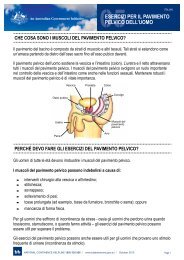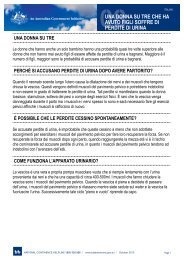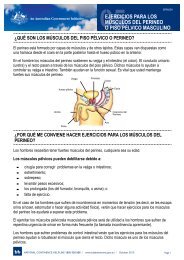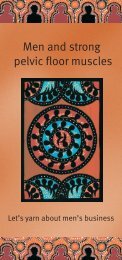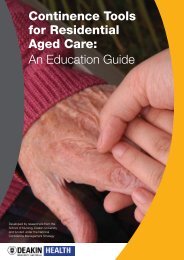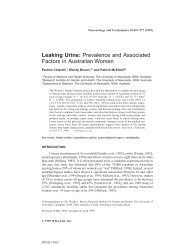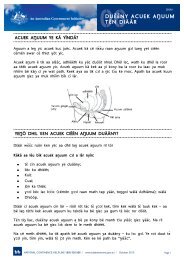Pharmacy Continence Care - Bladder and Bowel Website
Pharmacy Continence Care - Bladder and Bowel Website
Pharmacy Continence Care - Bladder and Bowel Website
Create successful ePaper yourself
Turn your PDF publications into a flip-book with our unique Google optimized e-Paper software.
prior to training (PIQ) <strong>and</strong> the same instrument administered at the conclusion of the<br />
pilot Program (PEQ) to measure change against Program objectives <strong>and</strong> performance<br />
indicators<br />
• to evaluate consumer benefits, recruited customers (people with or at risk of<br />
incontinence, <strong>and</strong> carers) would be asked to consent to <strong>and</strong> respond to a self-report<br />
survey instrument at enrolment (in-pharmacy) for baseline data on awareness of<br />
continence management, on their experience of the social, financial <strong>and</strong> physical impact<br />
of incontinence, using the IIQ, <strong>and</strong> their past or present use of other health services for<br />
incontinence. To measure benefit, the questionnaire would be re-administered by followup<br />
telephone interview at three months post baseline<br />
• to evaluate sustainability, the evaluation aimed to elucidate the business benefit to<br />
pharmacies, improved consumer quality of life <strong>and</strong> any downstream outcomes such as<br />
referrals to other health services.<br />
In discussion with the Expert Advisory Group, it was agreed that the evaluation approach<br />
should concentrate on whether the PCCP was a sustainable strategy, <strong>and</strong> not endeavour to<br />
assess cost-benefit, which would not be possible in the time <strong>and</strong> with the data <strong>and</strong> resources<br />
available.<br />
The evaluation approach was consequently revised to accommodate two key evaluation<br />
components:<br />
• an evaluation of the effectiveness of information <strong>and</strong> assistance provided by pharmacists<br />
o through increased identification <strong>and</strong> referral of consumers<br />
o by assessing the quality of life impact of the intervention<br />
• an assessment of the cost-effectiveness of the service through assessment of the<br />
perception of business impact on the pharmacy <strong>and</strong> the perception of impact on<br />
consumer health <strong>and</strong> wellbeing.<br />
The evaluation aimed to assess the extent to which the pilot PCCP Program, particularly the<br />
training <strong>and</strong> pharmacy information <strong>and</strong> training resources, assisted community pharmacies<br />
in:<br />
• identifying those with untreated or poorly managed incontinence as well as people at risk<br />
of incontinence<br />
• effectively advising people with or at risk of incontinence, with resulting customer loyalty<br />
<strong>and</strong> improved health outcomes<br />
• providing a cost-effective service to those with or at risk of incontinence.<br />
The evaluation considered both economic <strong>and</strong> non-economic behaviour on the part of<br />
pharmacists, consumers of pharmacy services <strong>and</strong> other stakeholders in the management<br />
<strong>and</strong> treatment of incontinence, across three broad dimensions:<br />
• the business benefits <strong>and</strong> costs to pharmacies<br />
• health gains <strong>and</strong> costs for consumers with or at risk of incontinence, <strong>and</strong> carers<br />
• the take-up of/referral by other health services.<br />
In addition, the effectiveness of the training provided was evaluated, as training is a key<br />
component of the PCCP <strong>and</strong> will need to be fully compliant with QCPP st<strong>and</strong>ards <strong>and</strong> be<br />
sustainable, affordable, attractive <strong>and</strong> effective for the PCCP to be provided nationally.<br />
Appendix 1 provides the full text of evaluation instruments used.<br />
The pharmacy questionnaires were administered by semi-structured telephone interview.<br />
Final Report<br />
22<br />
NOVA Public Policy<br />
<strong>Pharmacy</strong> <strong>Continence</strong> <strong>Care</strong> Project



